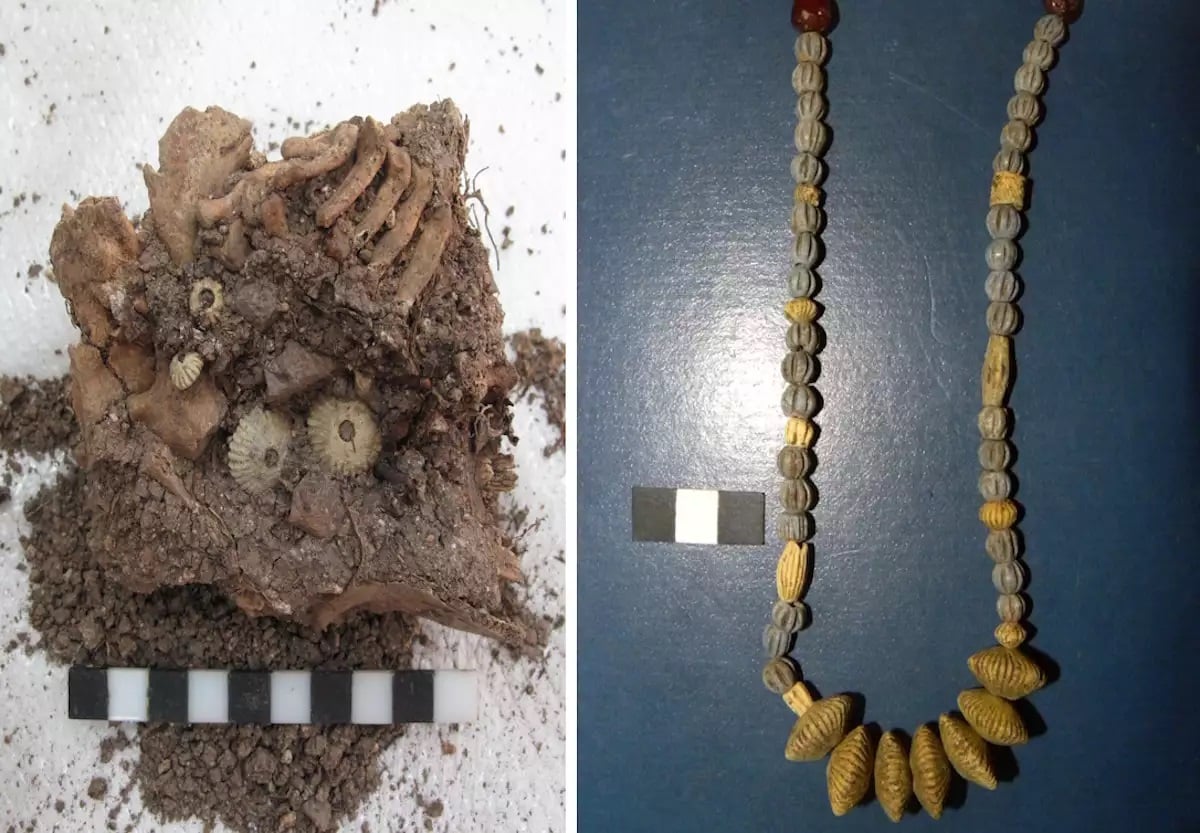
The first confirmed case of Down syndrome in Ancient Greece was found on the island of Aegina, according to research published in the journal Nature Communications.
DNA analysis on the skeleton of a girl aged 12-16 months, who lived in the 13th century BC, in a Mycenaean settlement near the village of Lazaridis, showed that the child suffered from Down syndrome.
The syndrome is a genetic condition where a person is born with an extra copy of chromosome 21. This means that they have a total of 47 chromosomes instead of 46. This can affect how their brain and body develop.
The girl was buried wearing an elaborate necklace made of 93 beads of faience and vitreous, as well as six of cornelian, a finding indicative of the care he received in life and death.

The excavation has been carried out since 2005 by the Department of History and Archeology of the National and Kapodistrian University of Athens (EKPA). To date, a settlement and its cemetery have been uncovered.
The findings, as the director of the excavation, emeritus professor of Archeology at EKPA, Naya Polychronakou-Sgouritsa, told the Athens Macedonia News Agency (AMNA), demonstrate that the settlement of the Lazarids flourished in the two centuries of the Palace period (the 14th and 13th centuries BC) and played an important role in the events of the time in the wider Argosaronic Gulf.
In 2010 the excavation in the settlement brought to light an unexpected find, a small box-shaped tomb, dated to the 13th century BC.
How scientists uncovered the Down syndrome girl of ancient Greece
The find was soon to become very exciting for archaeologists: inside the grave were the bones of a small child along with an elaborate necklace.
Immediately they transferred the find together with the soil that surrounded it to the Conservation Unit of the Museum of Archeology and Art History of the Greek National Academy of Sciences, to be carefully cleaned and preserved.
The osteological research carried out on the skeletal material by the bioarchaeologist, Dr. Eleanna Prevedorou, found that she had morphological characteristics of skeletal changes indicative of a very serious chronic disease or diseases.
In other words, she was a little girl “who spent most, if not all, of her life very ill and suffered from intense pain”, as Prevedorou tells AMNA.
Later genetic analyses of samples of the material carried out at the Max Planck Institute for Evolutionary Anthropology, in Germany, revealed that this little girl also suffered from Down syndrome.
“However we do not yet know whether and to what extent the severe health problems detected osteologically were associated with the syndrome”, Prevedorou explains.
This finding is very important, as it is the first time that a case of Down syndrome has been identified in Greece during antiquity, emphasizes the professor emeritus of EKPA, Naia Polychronakou-Sgouritsa, clarifying however that “there may be others, which however have been examined by a large institute, such as Max Planck.
Only a few cases of Down syndrome have been recorded in humans in ancient times, mainly because of the difficulties in identifying genetic disorders in ancient DNA samples without the use of modern techniques.
See all the latest news from Greece and the world at Greekreporter.com. Contact our newsroom to report an update or send your story, photos and videos. Follow GR on Google News and subscribe here to our daily email!



